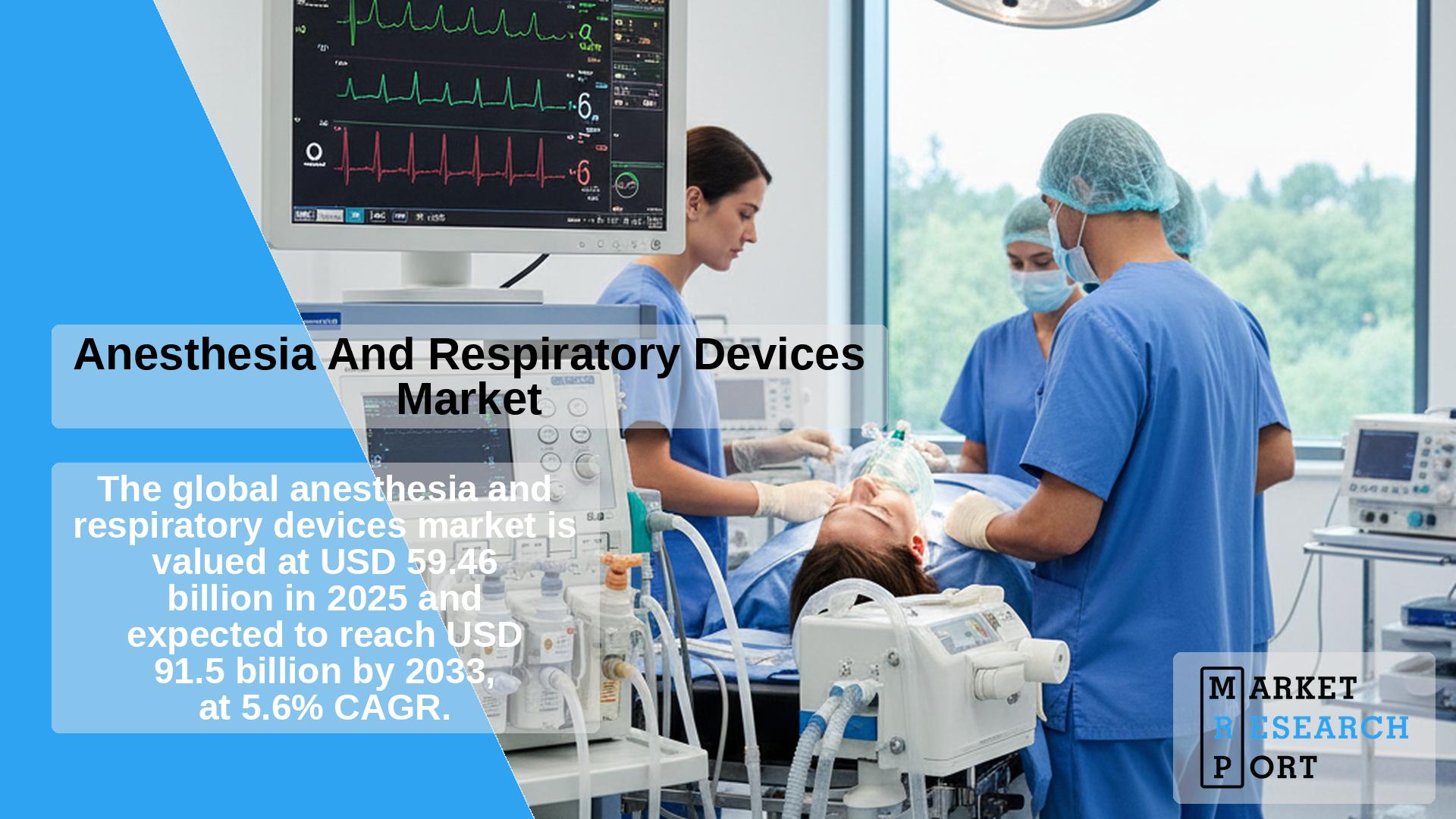
The global anesthesia and respiratory devices market was valued at approximately USD 59.3 billion in 2025 and is projected to reach USD 91.5 billion by 2033, showing a compound annual growth rate (CAGR) of 5.6% between 2025 and 2033. The market growth is primarily driven by the rising prevalence of respiratory disorders such as Obstructive Sleep Apnea (OSA) and Chronic Obstructive Pulmonary Disease (COPD), increasing surgical procedures, urbanization, pollution, aging populations, and tobacco consumption worldwide.
Escalating incidence of respiratory diseases, such as COPD and chronic bronchitis, linked to smoking and environmental factors, fuels demand for both anesthesia and respiratory devices. WHO data indicates tobacco use causes over 8 million deaths annually, significantly affecting respiratory health globally.
Technological advancement is a major growth catalyst. Innovations include smart inhalers, AI-driven monitoring systems, and portable ventilators that enhance patient care. For example, in September 2023, Smartmi introduced the Evaporative Humidifier 3, designed to improve air quality especially for individuals with respiratory allergies.
Respiratory devices hold over 60% market share, driven by demand for advanced oxygen concentrators, nebulizers, and positive airway pressure devices supporting conditions like fibrosis, asthma, and acute respiratory distress syndrome.
The anesthesia devices segment benefits from growing surgical rates and a rising geriatric population, driving demand for advanced anesthesia workstations and delivery systems in hospitals and ambulatory centers.
The industry exhibits high innovation levels, including AI-powered COPD diagnostic wearables demonstrating early detection with high accuracy, and new product launches such as disposable masks for enhanced patient comfort and safety.
Mergers and acquisitions accelerate expansion. For example, in August 2024, ZOLL acquired Vyaire Medical’s ventilator business, broadening its ventilator portfolio to serve more clinicians and patients.
Regulatory impact is significant, with agencies like the U.S. FDA ensuring strict compliance. Manufacturers must meet rigorous safety standards to maintain market access, exemplified by the enforced manufacturing halt on some Philips Respironics devices until compliance with FDA standards.
Dominates the market with a 30.5% share due to a large elderly population driving surgeries and respiratory care needs. Government initiatives such as the SOAR Act support increased accessibility to oxygen concentrators. Major players include GE Healthcare, Philips, and Medtronic.
Growth is driven by technological adoption, strong healthcare infrastructure, and an aging population. Countries such as the UK, Germany, and France are leaders, with growing investment in cost-effective respiratory solutions.
Fastest growth reflects rising awareness, prevalence of respiratory diseases, and government support. Notable programs include Singapore’s distribution of pulse oximeters to households for COVID-19 monitoring and price reductions on oxygen concentrators in India.
Emerging markets with increasing adoption of advanced devices, although constrained by infrastructure challenges. Countries like Brazil, Saudi Arabia, and South Africa see growing investments in device access and healthcare delivery.
This report incorporates revenue forecasts, company rankings, competitive landscape overview, and growth trends from 2021 to 2033 across product types and geographies.
Who are the market leaders?
Key players include Medtronic, Teleflex, Koninklijke Philips N.V., Drägerwerk, Getinge, Smiths, Fisher & Paykel, and others.
What drives the market growth?
Increasing respiratory disorders, higher surgical rates, urbanization, pollution, aging populations, and tobacco use.
How large is the market size?
Valued at USD 59.3 billion in 2025.
What is the growth forecast?
Expected CAGR of 5.6% from 2025 to 2033.
Which region dominates the market?
North America with a 30.5% share in 2024, led by the U.S.